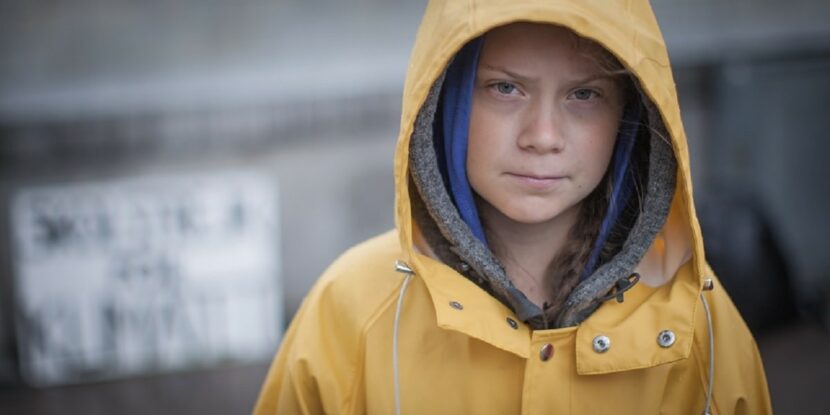When I was a kid, my siblings pranked me by telling me there was a man living under the basement stairs. Anyone who would secretly live under the basement stairs had to be there for only one reason: to murder me. They probably only told me about a serial killer in the basement one time, but it stuck.
Now imagine being told on a daily basis you’re going to die in twelve years. That’s exactly what the Greta Thunbergs of the world have been listening to for as long as any of them can remember, and they are arguably one of the most angst-filled generations in the history of mankind.
The threat of near imminent death is causing what is now being referred to as eco-anxiety. Eco-anxiety is a single-minded fear focused on environmental destruction, phobias and “…unrelenting day-by-day despair.” It is fear of famines, heat waves, drought, flooding, depleted snow pack, species extinctions, proliferation of disease, and the demise of planet Earth as we know it. In other words, the apocalypse.
This generation of children is being bombarded with messages and images of a planet under siege. They hear it from parents, teachers, siblings, politicians, clergy, the media, and Hollywood elitists. They hear it so emphatically that the field of eco-psychology has emerged to address the fallout. Among other things, psychologists who deal with cases of eco-anxiety report patient symptoms such as feelings of helplessness, fear, fatalism, and solastalgia.
Solastalgia, you ask? You won’t find that word in the dictionary, because it’s a made up word to describe the, “Emotional disquiet about negative changes in one’s environment.”
Children more than anyone are extremely vulnerable to this constant barrage of gloom and doom. According to Caroline Hickman, a Teaching Fellow in the Department of Social and Policy Sciences at the University of Bath, the manifestation of eco-anxiety is, “…the same [as clinical anxiety], the feelings are the same, but the cause is different. The fear is of environmental doom — that we’re all going to die.“
In 2017, the American Psychological Association acknowledged eco-anxiety as a legitimate diagnosis. While most people are familiar with the concept of post-traumatic stress disorder (PTSD), eco-anxiety is producing what some experts are calling pre-traumatic stress disorder; the fear of something that hasn’t happened but that your parents, and the media, and a whole host of other people who stand to benefit from the hysteria won’t stop telling you is going to happen in the future.
These are kids for whom the phrase “paper or plastic” strikes fear in their hearts, and for whom the onslaught of bad news fed to them daily by their parents and other adults has resulted in irrational behavior. For example, a 17-year-old boy was hospitalized after he refused to drink water out of fear it would cause many deaths in drought ridden Australia. Even the House of Windsor hasn’t been spared, as Prince Harry, Duke of Sussex, has admitted that eco-anxiety leaves him struggling to get out of bed — an odd claim given just three of his family’s extensive collection of palaces encompass almost 2 million square feet.
And so we are left with the Greta Thunbergs of the world. Thunberg, the poster child of the climate crisis militia, is just another despairing child among many who has been spoon fed a diet of fear, panic, and desperation. They believe, as Thunberg espoused, that we’ve dashed their dreams and stolen their childhoods with our SUVs and Starbucks straws because that’s what they’ve been told.
A climate change documentary in Thunberg’s school frightened her so much it resulted in a fixation she can’t control. Her fear is exacerbated by the fact she is non-neurotypical and has an extremely obsessive-compulsive personality, a fact that makes what her parents and PR handlers have done to her even more repugnant.
Like many others, Thunberg has been told to panic. She has been told there is no hope. She has been told that civilization is coming to an end and that we are running out of time. (Conspicuously, Thunberg’s original PR manager runs a climate change organization called We Don’t Have Time.)
There are a host of things parents can and should do to ease the anxiety of a persistently frightened children (other than shoo them onstage with a canned speech and a dose of piss and vinegar). Parents have a responsibility to a child who believes the end is near, including fostering optimism and engaging in practices at home that create a sense of productivity and connectedness to the environment and the community. It’s borderline abusive to continue to feed the beast.
The cult of climate alarmists who inculcate fear in children with messages of pessimism and doom are extremely irresponsible. They are enabling a generation and a citizenry that is exhibiting signs of anger, fanaticism, mental illness, emotional instability, and violence. Not only are they a danger to themselves, they have the potential to be a very real danger to others. Toning down the rhetoric would go a long way toward reassuring an angst-filled generation of children that the sky isn’t really falling.
Photo credit: Anders Hellberg via Wikimedia Commons, CC BY-SA 4.0


